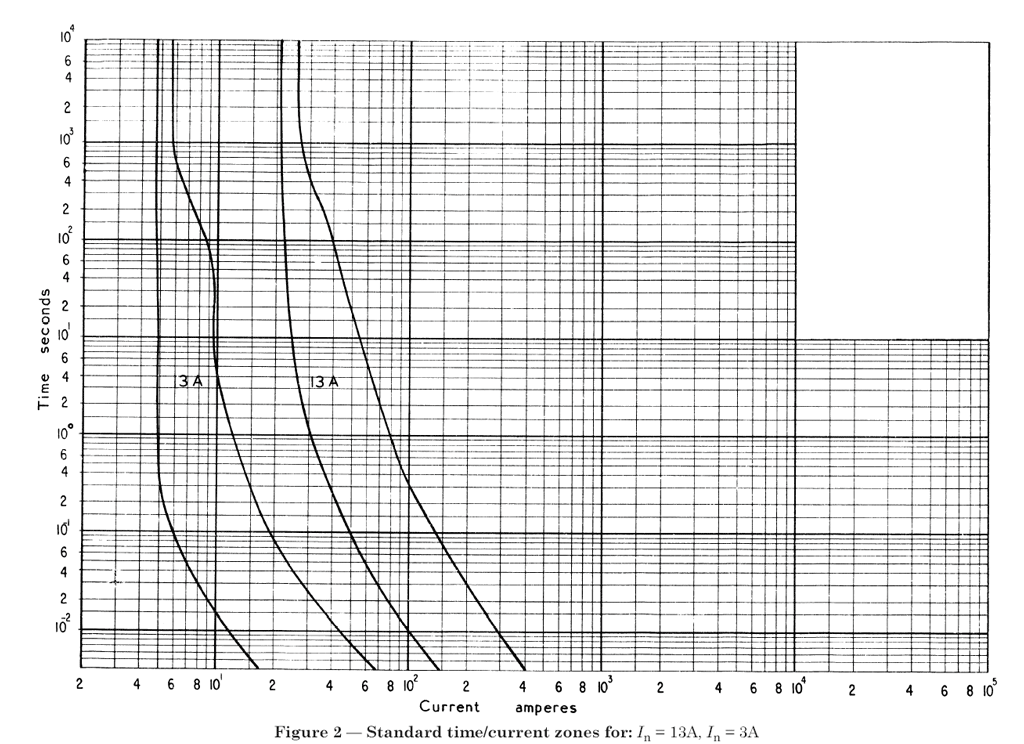- Joined
- 27 Sep 2004
- Messages
- 1,300
- Reaction score
- 83
- Country

Has anyone got the time graph for a bs1362 13A fuse?



I seriously doubt that it would 'ever' blow (anyone know what the I1 of a BS1362 is meant to be?). The curves are essentially vertical at 10,000 secs (167 mins, about 2.8 hours) and, even with the 'lower limit' curve that requires about 21A. I therefore doubt that a current much less than 21A would 'ever' blow the fuse.I don't quite get that time chart!I need to know how long 14A would take to blow a 13A fuse but can't make sense of the time indications at the min!?
Conventional maybe not.....Expensive ones can be obtained and these can be accurate enough to trip at In + 5% or better. But these are not for the average domestic situation.I doubt that there's a conventional protective device of any sort made where In+1 will cause it to operate.
You were not careful enough in wording thatI doubt that there's a conventional protective device of any sort made where In+1 will cause it to operate.
One assumes that, given enough effort and expense, one can make the trip threshold as close to In (and I1) as one wishes (particularly if sensing is electronic). However, in the case of, say, standard Type B MCBs, there is actually a requirement that they should be able to carry In + 13% indefinitely without operating. I'm not sure whether that is to cater for manufacturing tolerances and in-service imprecision (i.e. so as to ensure that they never operate at In) or what.Conventional maybe not.....Expensive ones can be obtained and these can be accurate enough to trip at In + 5% or better. But these are not for the average domestic situation.I doubt that there's a conventional protective device of any sort made where In+1 will cause it to operate.

Carry a fire extinguisher, a range of spare sockets, some twin and earth.I know it's not right but then what else could he do if he is going to insist on doing it?
The fuse certainly won't blow, even in a whole day - as the graphs indicate, that would probably require something approaching 20A. However, it's clearly 'wrong' and the fuse might 'overheat' and damage the plug (and possibly also socket) - although with such a 'slight' overload, I doubt that, in practice, there would be a significant problem. ... but it's still wrong!The reason for the question in the first place was a customer of mine is buying a 3.4kw single phase steam cleaner. He travels to people's houses and plugs it into 13a socket to use. Sometimes it could be running all day (minus half hr lunch break) I know it's not right but then what else could he do if he is going to insist on doing it? 3.4kw is 14.16A at 240v. So he probably won't get problems of blowing his plug top fuse then!


If you need to find a tradesperson to get your job done, please try our local search below, or if you are doing it yourself you can find suppliers local to you.
Select the supplier or trade you require, enter your location to begin your search.
Are you a trade or supplier? You can create your listing free at DIYnot Local
